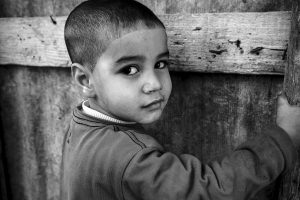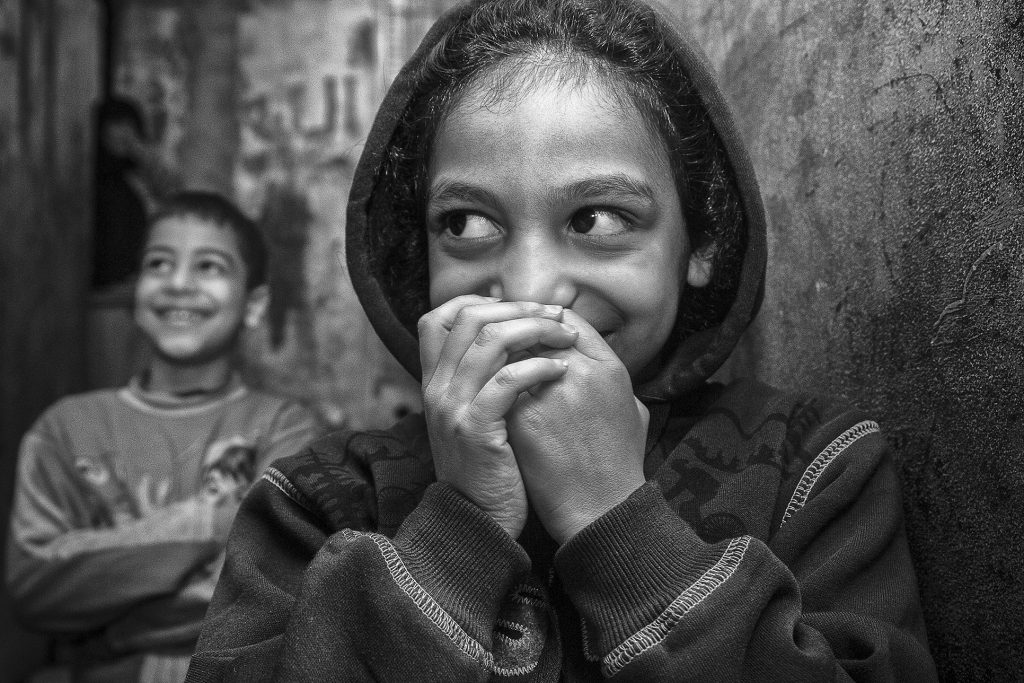São Paulo – Looking at the camera with assertive gazes, Palestinians children and teenagers were portrayed by photographer Karine Garcêz. The Brazilian artist traveled through Middle East countries depicting the reality of those who have to deal with being refugees in their early years in life. “I chose to portray children because of the smile. Their message is remarkable,” says the artist born in Ceará. The pictures were put together for the exhibition Refugee Childhood, which will open on Children’s Day (12) at the Immigration Museum in São Paulo.
Garcêz chose 28 images, shot between 2014 and 2015, a period in which she visited Beirut, Lebanon, Gaziantep, Turkey, and Yarmouk, Syria. The opening is scheduled for 11 am, free of charge. The exhibition will run until December 16 and the Immigration Museum states that four of the pictures were adapted so visually impaired visitors can interact with the images by touching them.
With the exhibition, the photographer is looking to awakwen people’s sensitivities. “The goal is to arouse empathy and sensitivity in people. We’re in a time of xenophobia, hate speeches all over. The idea is to awaken people’s sensitivities, be it towards homeless or refugee children or towards your neighbor,” she says.

The museum’s executive director Alessandra Almeida sees asylum as a mounting humanitarian crisis, and believes that society needs to understand the reasons for these displacements and show solidarity in face of this scenario. The museum also launched a campaign to collect toys in good state of repair while the exhibition is taking place. The toys will be donated to children assisted by social center Nossa Senhora – Casa de Acolhida. Prior to the show’s opening, the workshop The world upside down: building a darkroom will be offered to the kids. This Saturday (13) and Sunday (14) will see the themed visit Crianças que Migram (Children who Migrate), at 11 am.
The project
Karine Garcêz got into photography in 2012, during a trip to Saudi Arabia to join the pilgrimage to Mecca. She’s a Muslim. “When I did the Hajj, I wanted to take photos of everything I saw. After that I went to Gaza. It was a unique experience. I had to learn the techniques while taking in a reality that’s completely out of my context, one I only knew about from other people,” Garcêz, an International Relations student, recalls.
Taking a step beyond photography, Garcêz made Refugee Childhood into a project. “Through the exhibition, I wanted to raise funds in order to undertake volunteer action in that part of the world.” After holding exhibits in Ceará, Paraíba and São Paulo, she came up with enough cash for the first action. “I was able to raise part of it, a reasonable sum which I used to purchase 100 school supplies kits which I gave away at a refugee camp in Lebanon’s Bekaa Valley,” she explains.
The photographer says she’s planning new actions involving work she did inspired by professionals like Sebastião Salgado and Ceará-born photographer Tiago Santana. “I’m thinking of portraying a side to childhood that people don’t see. All they see is the drama, the portrayal of pain as spectacle. I wanted to convey the human side, the way children see, and the innocence.”
Quick facts
Temporary exhibit – Refugee Childhood
Date: October 12 (Friday)
Opening: 11am / Free admission
Venue: Museum of Immigration– São Paulo (SP)
Find out more: www.museudaimigracao.org.br
Translated by Sérgio Kakitani & Gabriel Pomerancblum




